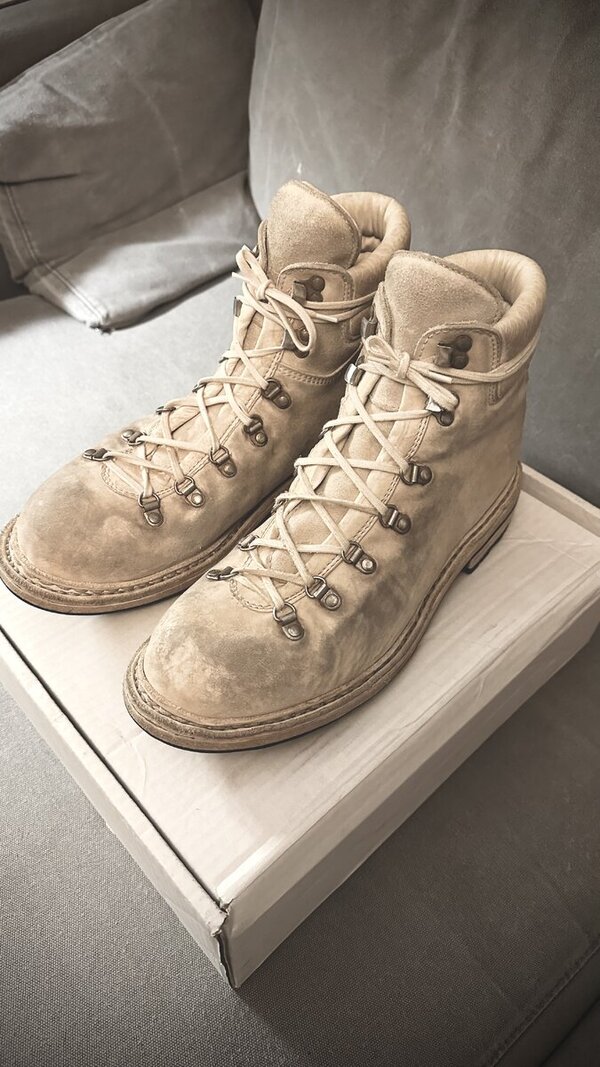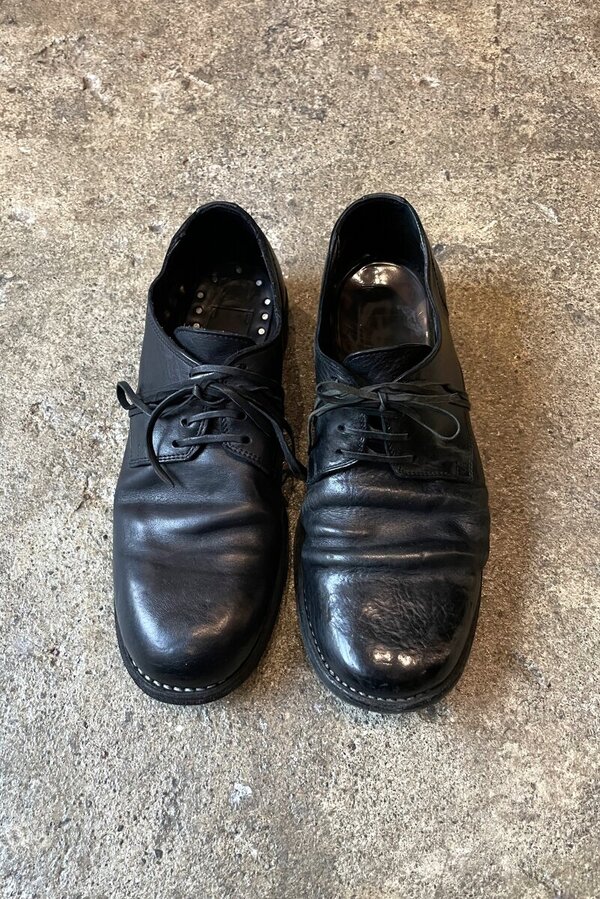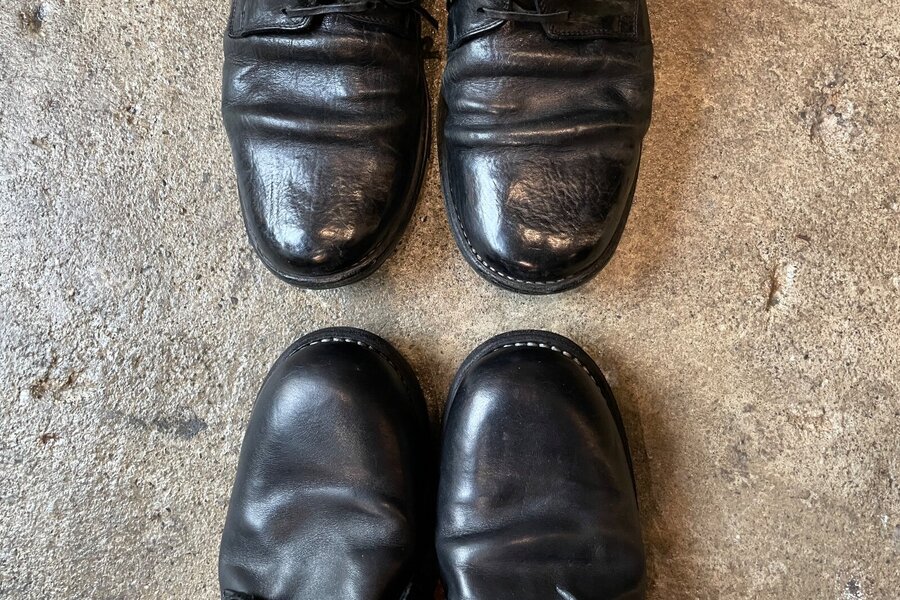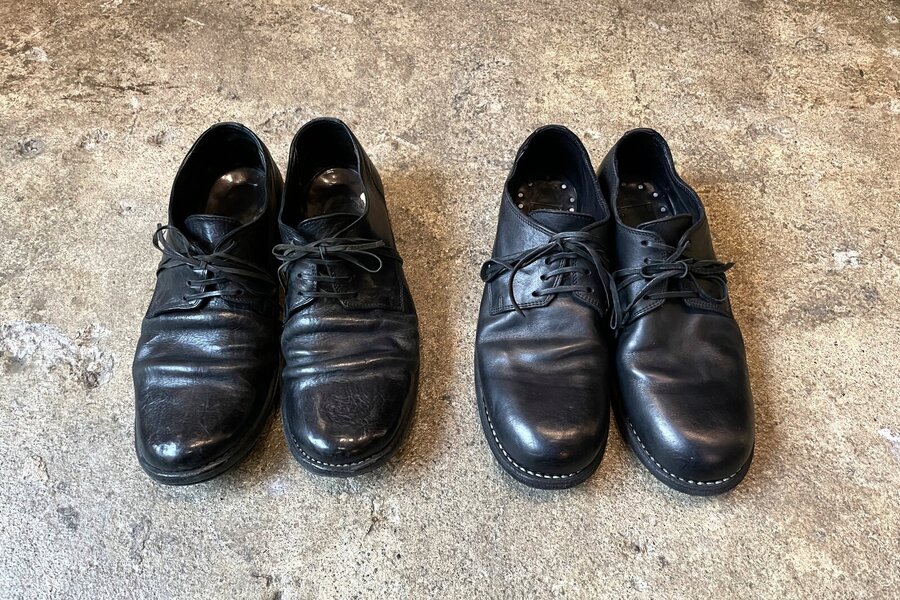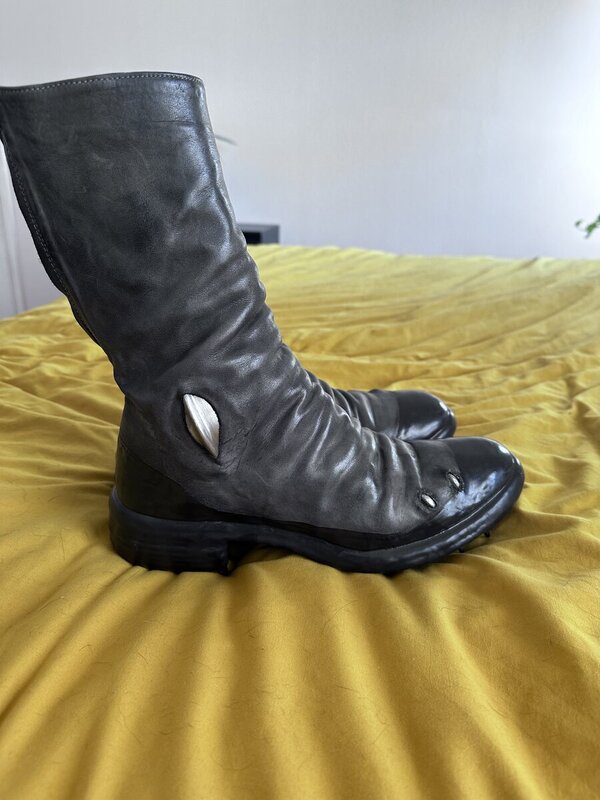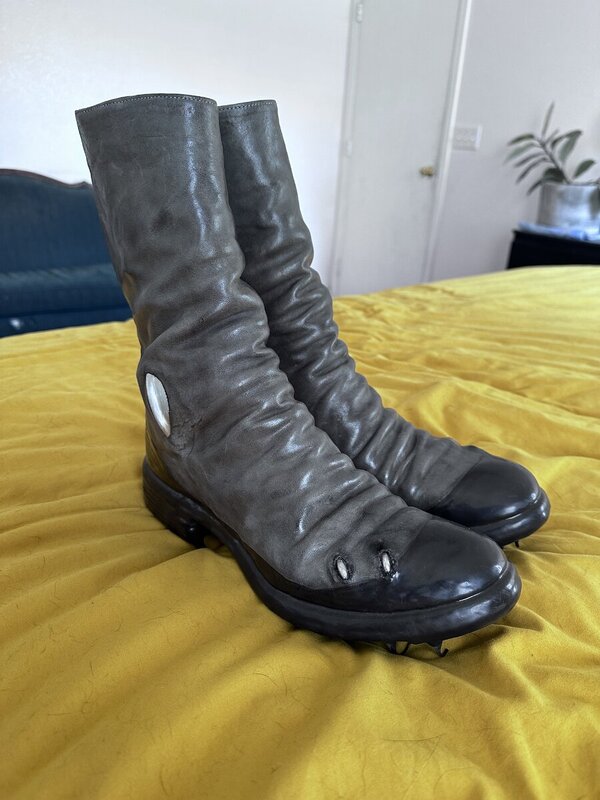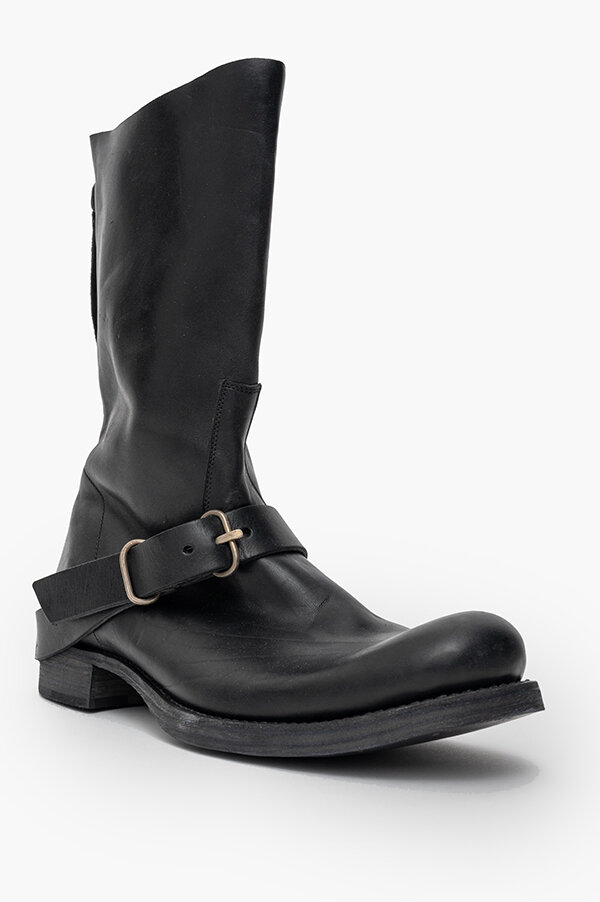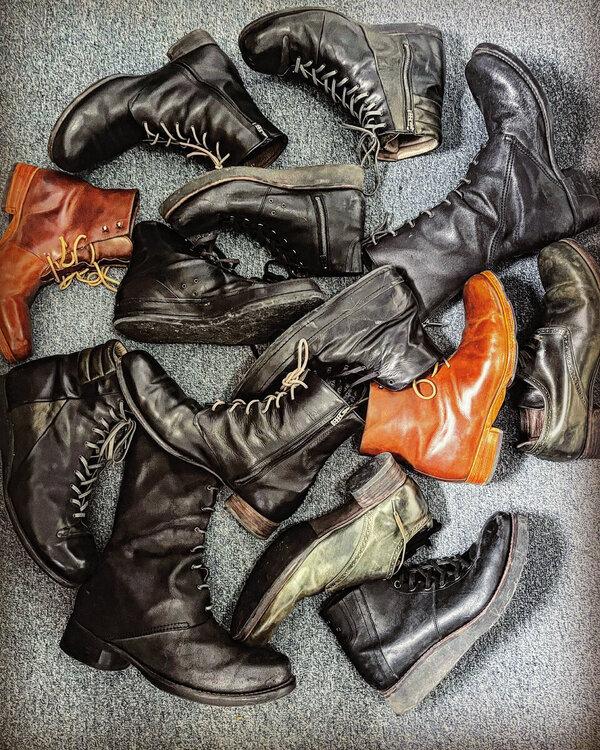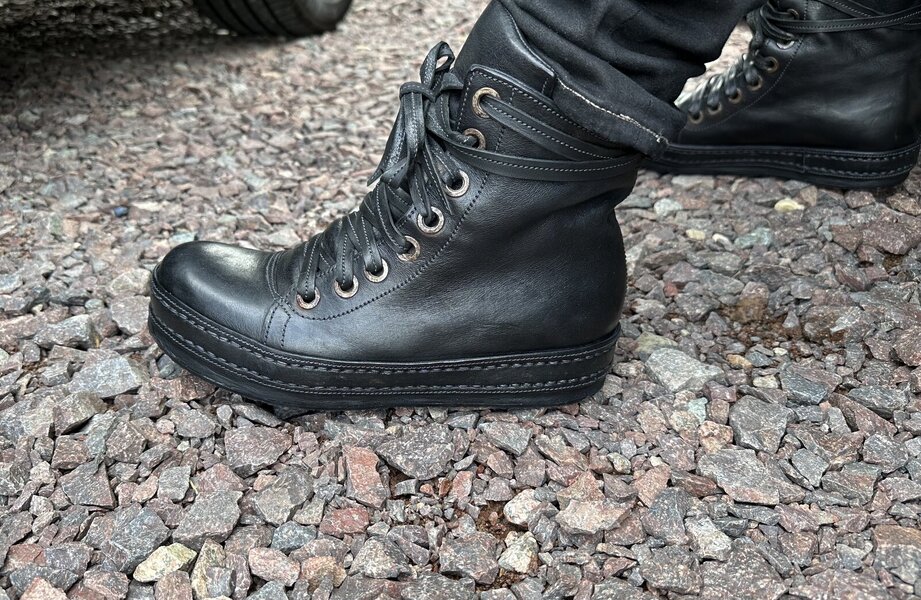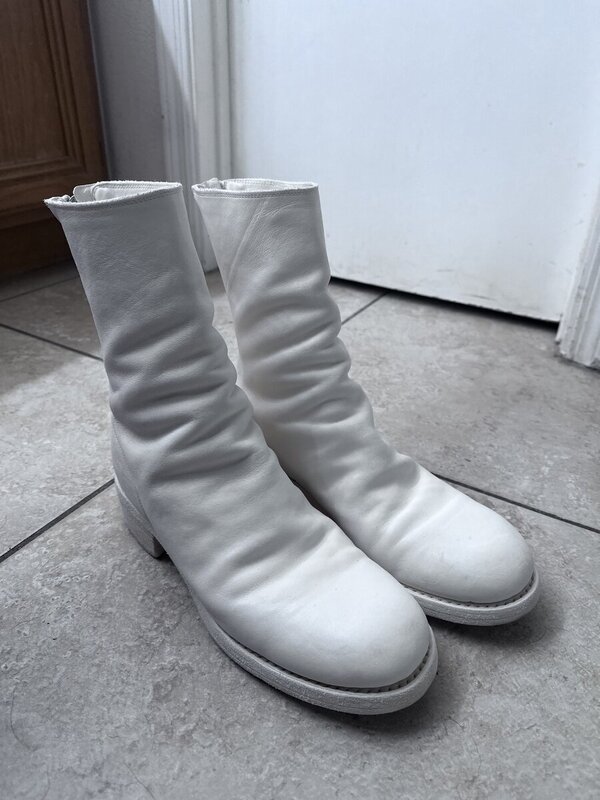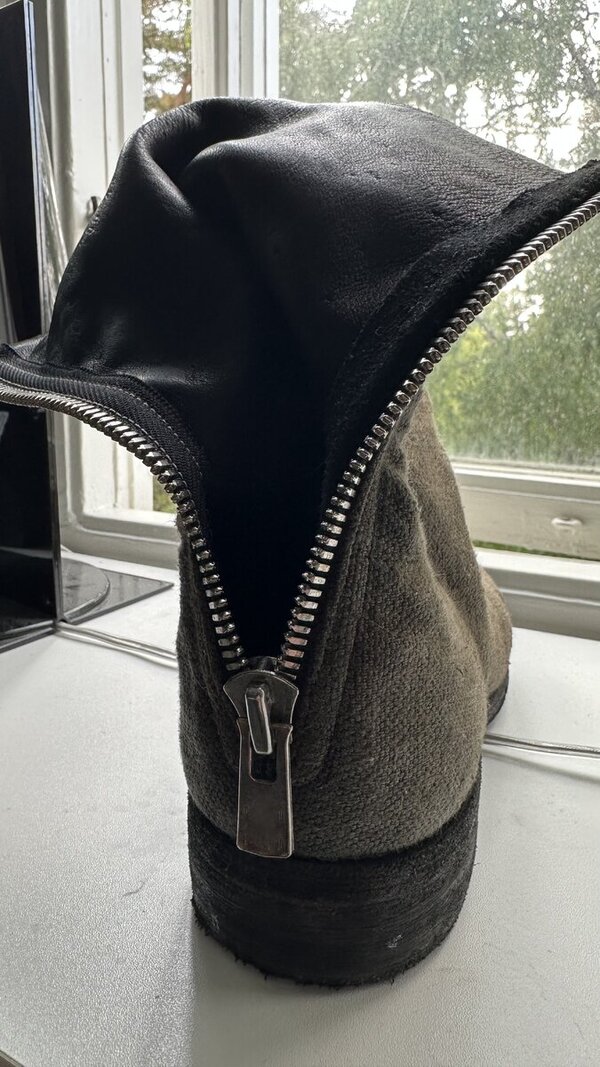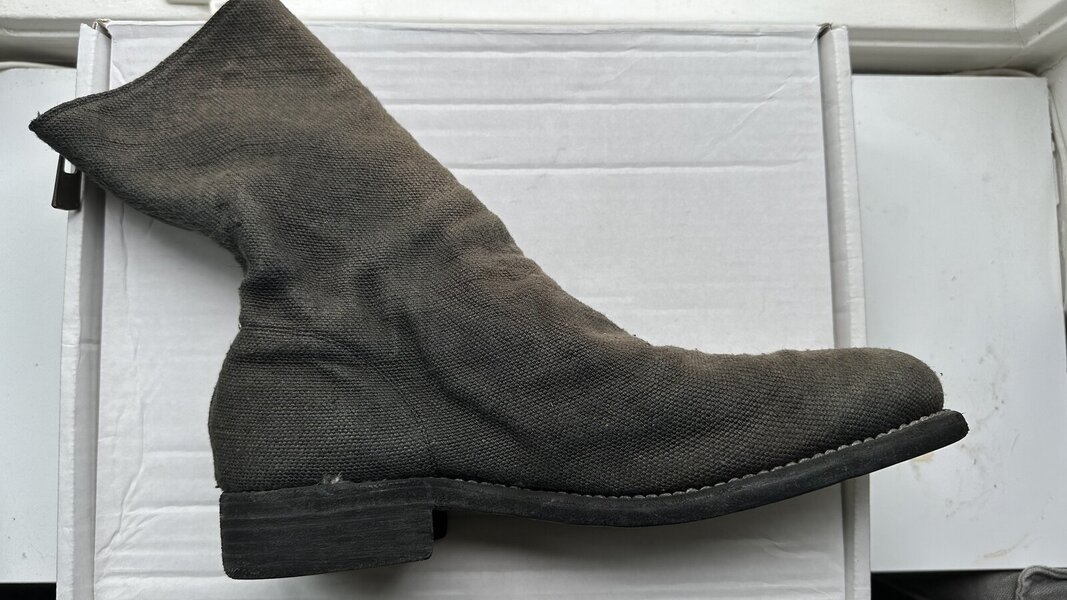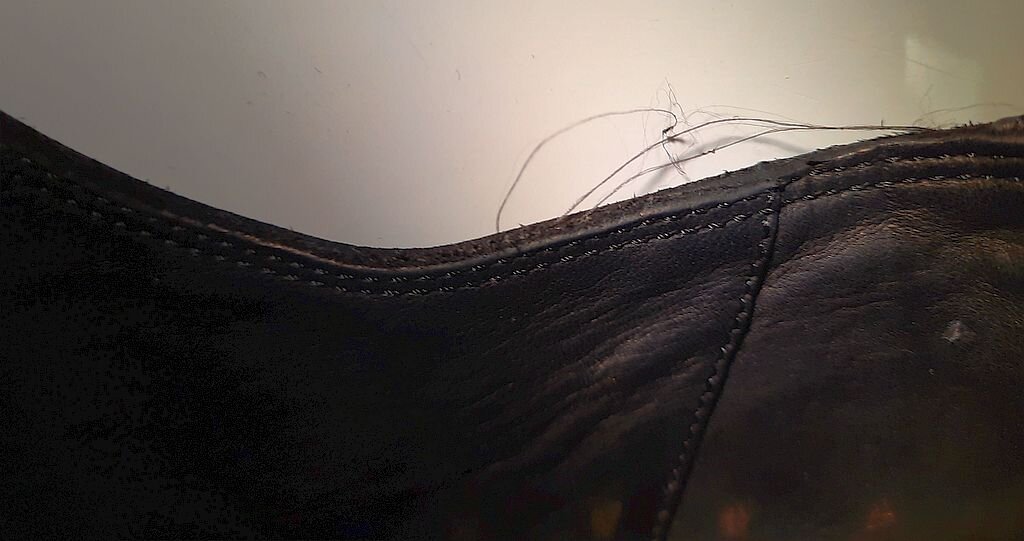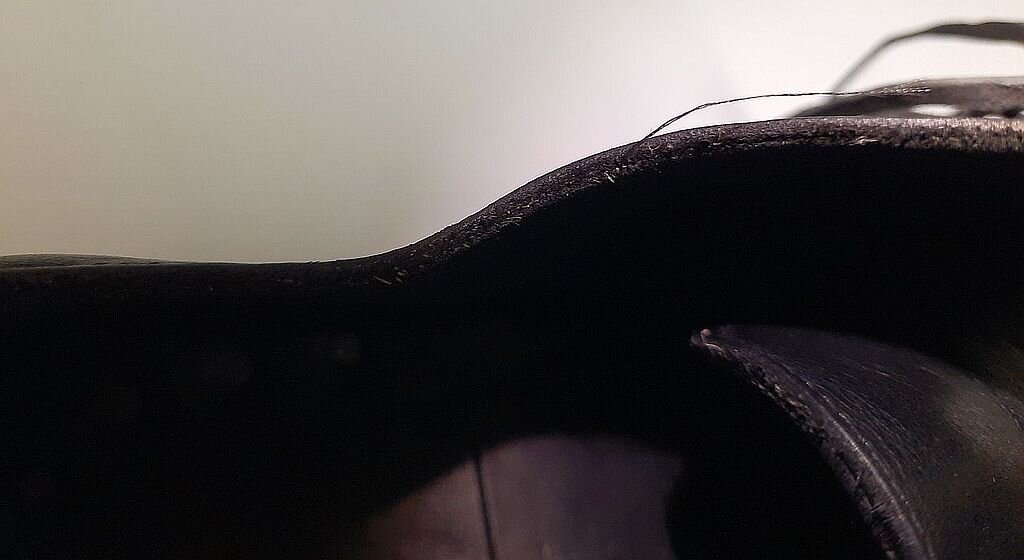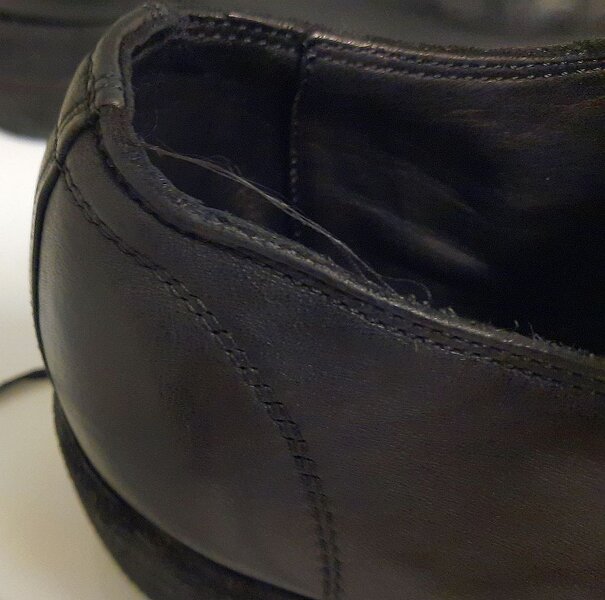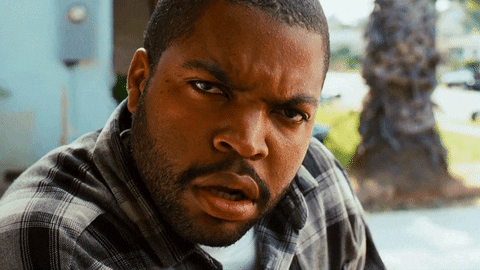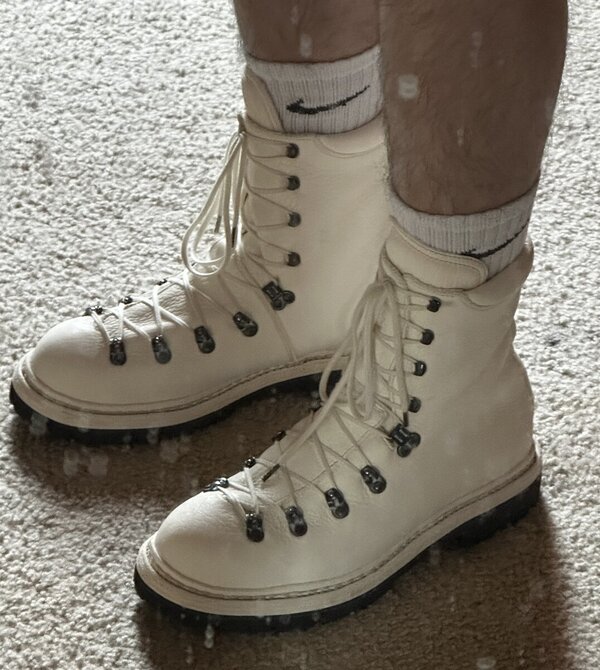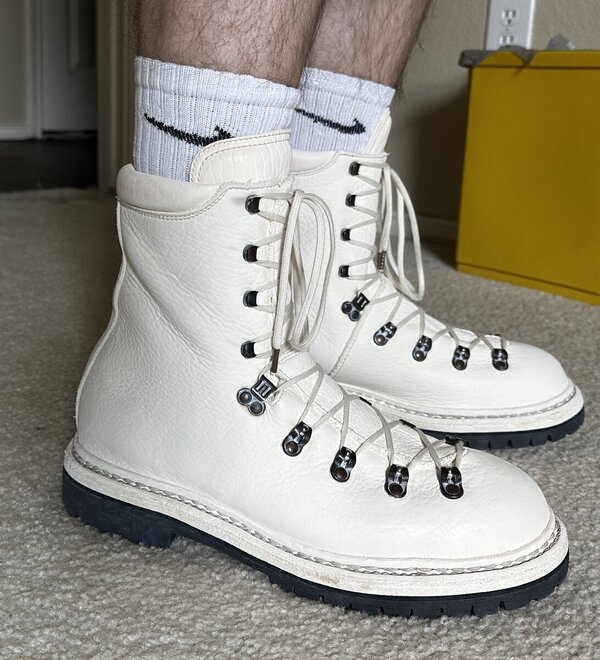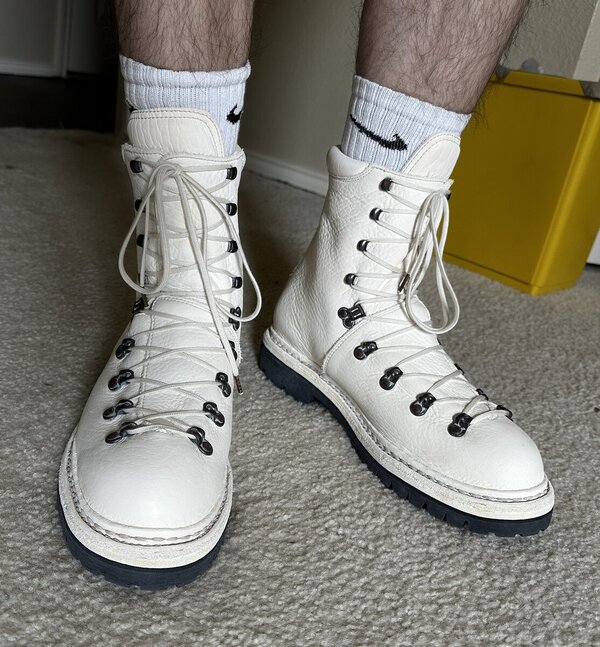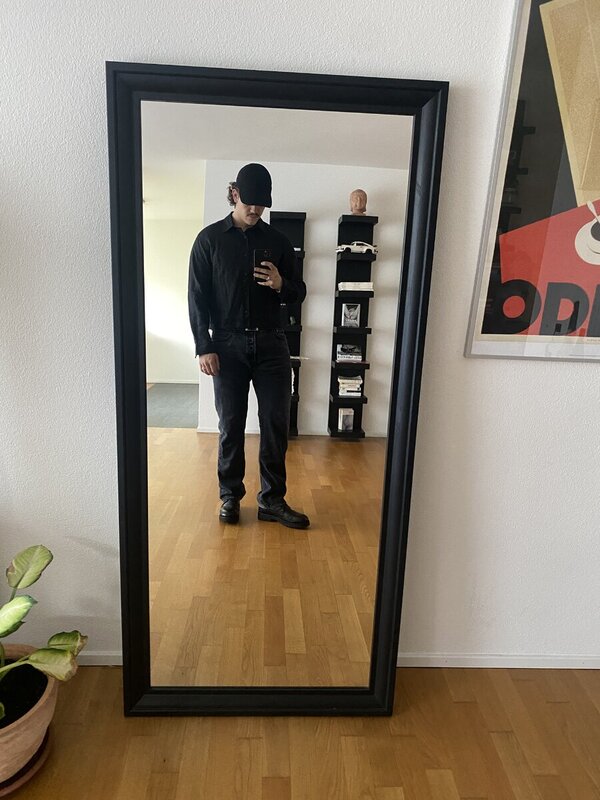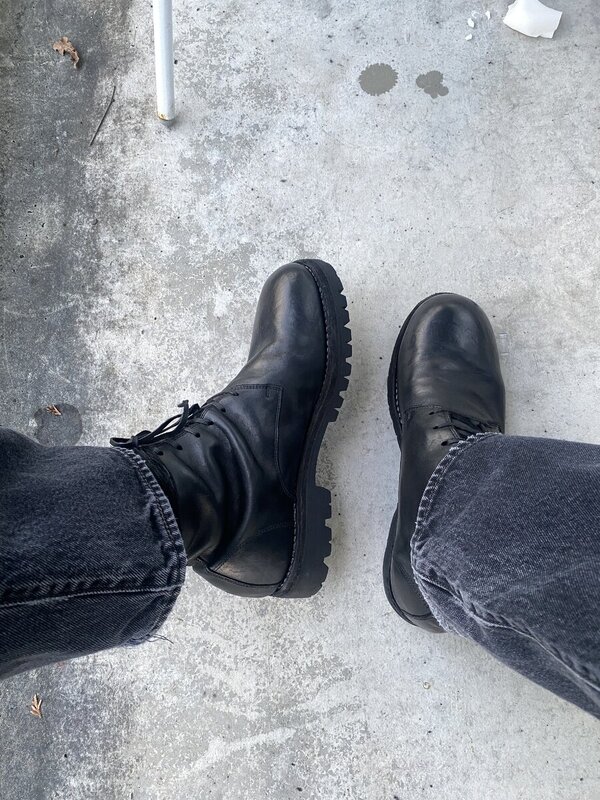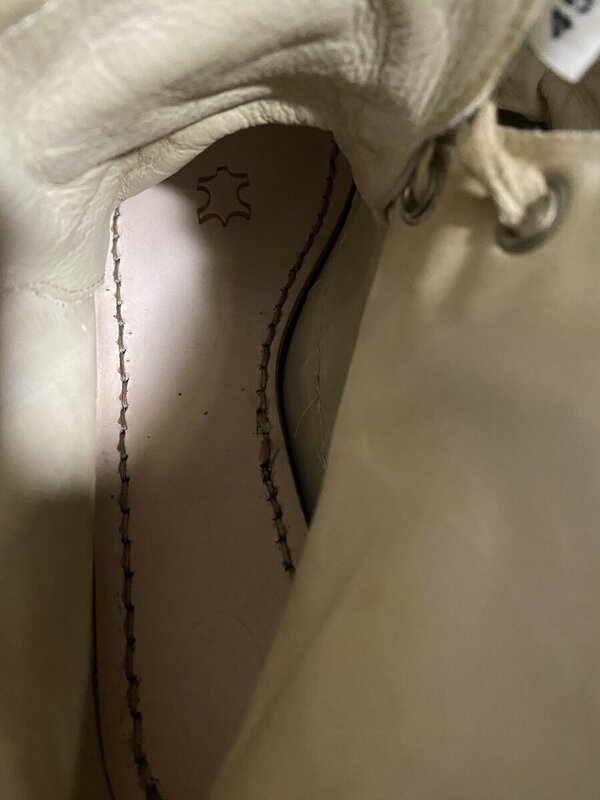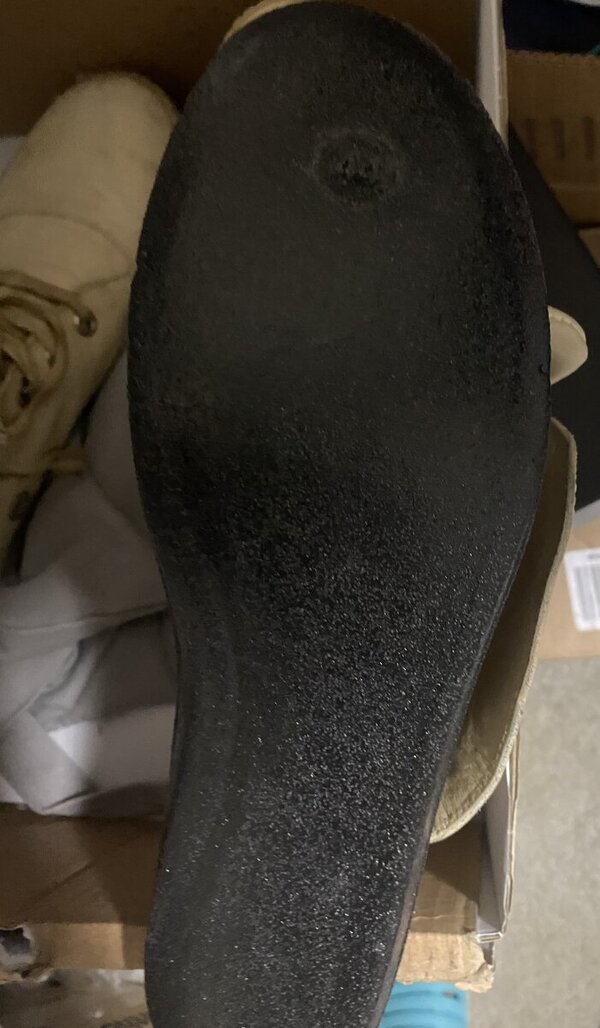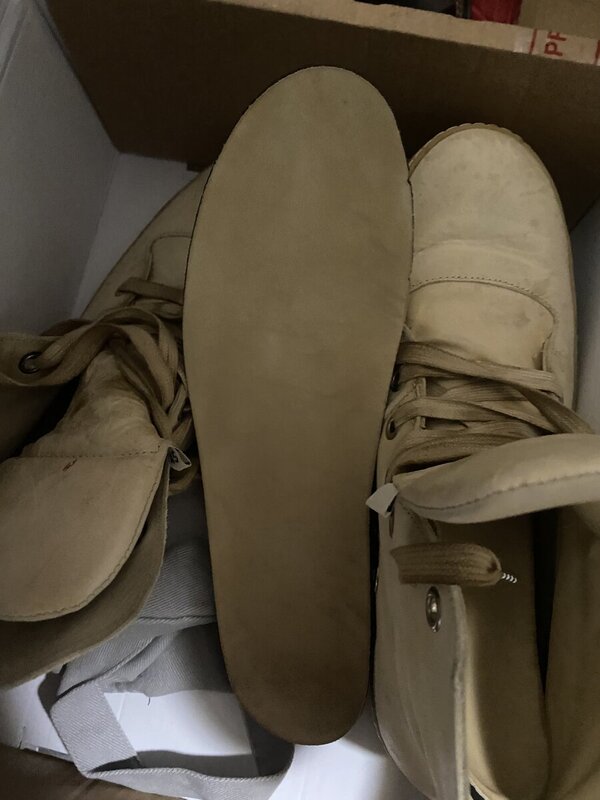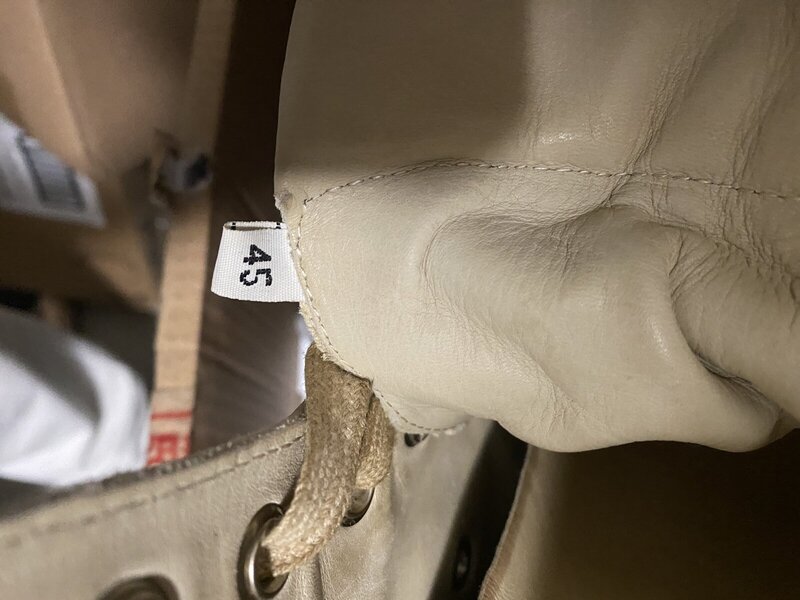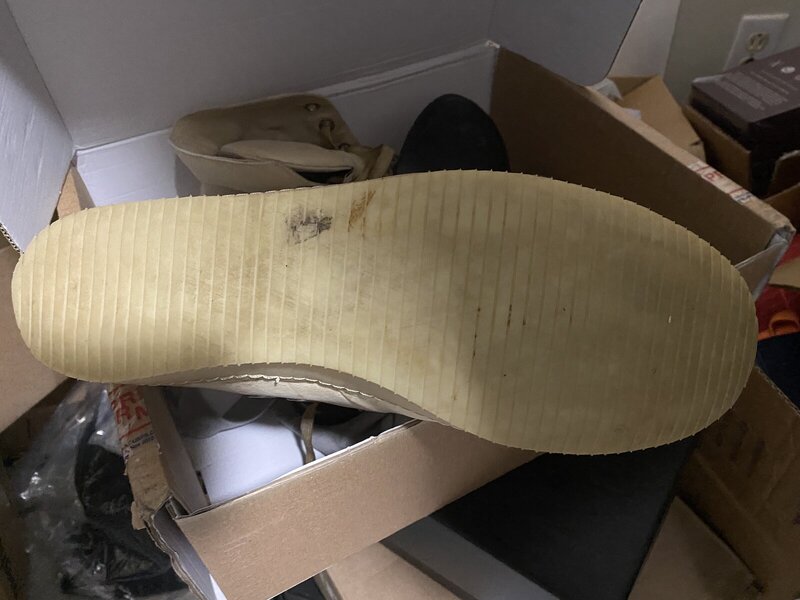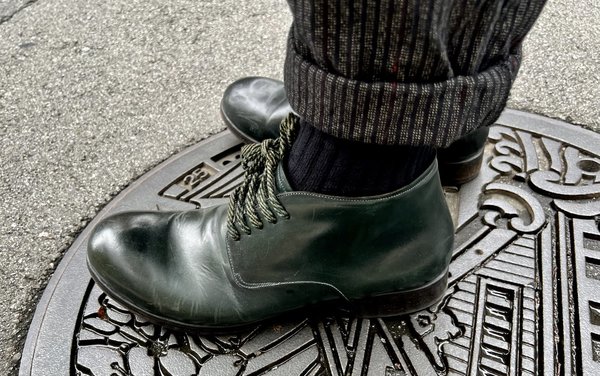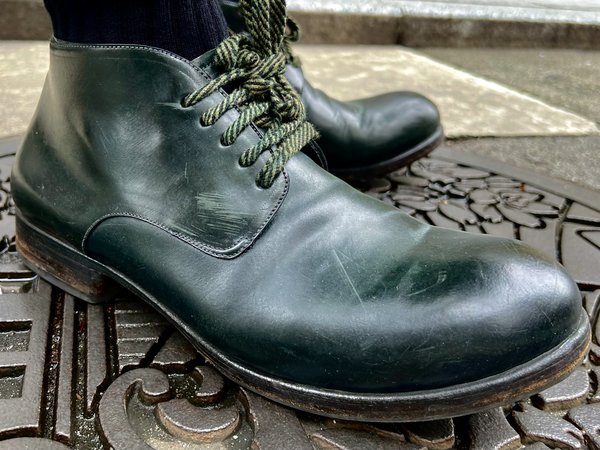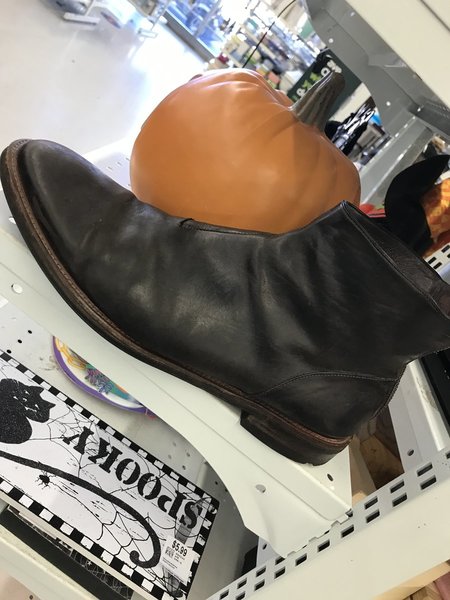Support the forum
Navigation
-
- Men's Style
- Classic Menswear
- Streetwear and Denim
- Preorders, Group Made-to-order, trunk shows, and o
- Menswear Advice
- Former Affiliate Vendor Threads; a Locked Forum.
- Career and job listings in fashion, mens clothing,
-
- American Trench
- AMIDÉ HADELIN
- Archibald London
- The Armoury
- Arterton
- Besnard
- Canoe Club
- Capra Leather
- Carmina
- Cavour
- Crush Store
- De Bonne Facture
- Drinkwater's Cambridge
- Drop93
- eHABERDASHER
- Enzo Custom
- Epaulet
- Exquisite Trimmings
- Fils Unique
- Gentlemen's Footwear
- Giin
- Grant Stone
- House of Huntington
- IsuiT
- John Elliott
- Jonathan Abel
- Kent Wang
- Kirby Allison
- Larimars Clothing
- Lazy Sun
- LuxeSwap
- Luxire Custom Clothing
- Nicks Boots
- No Man Walks Alone
- Once a Day
- Passus shoes
- Proper Cloth
- SARTORIALE
- SEH Kelly
- Self Edge
- Shop the Finest
- Skoaktiebolaget
- Spier and MacKay
- Standard and Strange
- Bespoke Shoemaker Szuba
- Taylor Stitch
- TLB Mallorca
- UNI/FORM LA
- Vanda Fine Clothing
- Von Amper
- Wrong Weather
- Yeossal
- Zam Barrett
Install the app
More options
-
Hi, I am the owner and main administrator of Styleforum. If you find the forum useful and fun, please help support it by buying through the posted links on the forum. Our main, very popular sales thread, where the latest and best sales are listed, are posted HERE
Purchases made through some of our links earns a commission for the forum and allows us to do the work of maintaining and improving it. Finally, thanks for being a part of this community. We realize that there are many choices today on the internet, and we have all of you to thank for making Styleforum the foremost destination for discussions of menswear. -
This site contains affiliate links for which Styleforum may be compensated.
-
STYLE. COMMUNITY. GREAT CLOTHING.
Bored of counting likes on social networks? At Styleforum, you’ll find rousing discussions that go beyond strings of emojis.
Click Here to join Styleforum's thousands of style enthusiasts today!
Styleforum is supported in part by commission earning affiliate links sitewide. Please support us by using them. You may learn more here.
You are using an out of date browser. It may not display this or other websites correctly.
You should upgrade or use an alternative browser.
You should upgrade or use an alternative browser.
The Official Artisanal "streetwear" footwear (boots, shoes, sandals) thread (Guidi, CCP, Augusta, M.
- Thread starter eckblk
- Start date
- Watchers 536
dmash
Distinguished Member
- Joined
- Sep 24, 2009
- Messages
- 4,438
- Reaction score
- 349
This is the only thing that worries me about tornadoes. It seems zipper problems are fairly common.
i thought they had construction issues though? for you at least. Or was that your augusta
This is the only thing that worries me about tornadoes. It seems zipper problems are fairly common.
dmash
Distinguished Member
- Joined
- Sep 24, 2009
- Messages
- 4,438
- Reaction score
- 349
Also, some CCP goods for you guys:
Red Side Zips sz 7
http://page11.auctions.yahoo.co.jp/jp/auction/n105349625
Black Wraparound Boots sz 9 (these are rare, so awesome)
http://page16.auctions.yahoo.co.jp/jp/auction/u39782579
Red Side Zips sz 7
http://page11.auctions.yahoo.co.jp/jp/auction/n105349625
Black Wraparound Boots sz 9 (these are rare, so awesome)
http://page16.auctions.yahoo.co.jp/jp/auction/u39782579
Last edited:
thekunk07
Stylish Dinosaur
- Joined
- Apr 27, 2007
- Messages
- 18,117
- Reaction score
- 3,247
no, the zipper came off after 4 wearings, 40 dollar repair
i thought they had construction issues though? for you at least. Or was that your augusta
no, the zipper came off after 4 wearings, 40 dollar repair
eton97
Senior Member
- Joined
- Jan 14, 2012
- Messages
- 611
- Reaction score
- 696
Never had a problem with the zippers on my tornadoes. There are always one-off issues, but on the whole my ccp footwear is solid as hell
Great pair of new Guidi 795z still avaliable.
http://stylezeitgeist.com/forums/showthread.php?t=14162
Hit me with a decent offer and they are yours
Great pair of new Guidi 795z still avaliable.
http://stylezeitgeist.com/forums/showthread.php?t=14162
Hit me with a decent offer and they are yours
Last edited:
sinnedk
Stylish Dinosaur
- Joined
- Nov 15, 2010
- Messages
- 17,108
- Reaction score
- 5,116
ahhh u missed me by one size on these
Never had a problem with the zippers on my tornadoes. There are always one-off issues, but on the whole my ccp footwear is solid as hell
Great pair of new Guidi 795z still avaliable.
http://stylezeitgeist.com/forums/showthread.php?t=14162
Hit me with a decent offer and they are yours
ahhh u missed me by one size on these
Lane
Distinguished Member
- Joined
- Jul 27, 2010
- Messages
- 5,236
- Reaction score
- 784
thats pretty ridiculous if its from oh marvelous CCP
no, the zipper came off after 4 wearings, 40 dollar repair
thats pretty ridiculous if its from oh marvelous CCP
Fuuma
Franchouillard Modasse
- Joined
- Dec 20, 2004
- Messages
- 26,951
- Reaction score
- 14,542
Italian factories can use pre-made heels and some tools to make them look built by hand. I like Simone and his stuff is very well-made but heels are no longer built by hand as far as I can say. I'm not 100% sure though and certainly not dissing the rock-solid shoes Simone makes, these things are tanks.
Eck do you know of any videos on Adiciannoveventitre construction? From the looks of it they might be fully handmade i.e. handwelted etc. If maker bothers to build up the heel by hand it seems that he wouldn't be tempted into gemming (although lobb, green, guidi, carmina etc all use gemming from the videos i've seen).
Italian factories can use pre-made heels and some tools to make them look built by hand. I like Simone and his stuff is very well-made but heels are no longer built by hand as far as I can say. I'm not 100% sure though and certainly not dissing the rock-solid shoes Simone makes, these things are tanks.
Last edited:
I haven't seen a video and I'm not really sure. What is "gemming"?
Here's an interesting interview from HLorenzo's Blog:
- Square One -
( Words by Simone Cecchetto )
"I never studied to design shoes. I studied, worked, and evolved through 3 years of self-study. In 3 years, I explored all the possibilities for shoemaking, starting with the stitch. Then I was able to start designing a collection. The first collection used with a simple stitch - a blake stitch - and then in every successive season I tried to develop new shapes, develop new styles, and develop new ways of stitching.
Regarding the shape, I experimented with a square shape, a round shape, etc. I think every season I develop 10, 20 shapes in research. But when finally I go to Paris for the presentation, I think I present only about 2 or 3 new shapes. And so before, the research for the shape is incredible. I study and I find inspiration from many different sources. There was one artist...what was his name? I think it was Norman Rockwell an illustrator for the New York Times maybe 70 years ago. I found this old book of Norman Rockwell and it served as inspiration. I don’t remember if it was the first or second collection I did, but I was also inspired by Japanese manga. And so for every season my inspiration evolves and I'm led to develop new shapes. I develop for the moment and my design is spontaneous. I design for the inspiration i find in just one minute, it’s crazy. People can’t understand why when they go to the showroom they see so many variations of shape - there's one a little bigger and another one just a little bit smaller. But all these variations are just for me. Because I design so I can be satisfied, and so I need to explore all the different possibilities of shapes. My designs are probably good for one day, but not for the next. So the work in the back is incredible – for the leather, for the shape, for all, it’s very complicated to develop one pair of shoes. It’s super complicated. I always start with the leather - I study the leather hides, then I select one and experiment with it, try it, feel it, and explore all its tactile properties. I always search for the perfect leather. After selecting the leather, then I can concentrate on developing the shoes, starting with studying the shape, but also how the leather molds to the desired shape.
- Full Circle -
I spend all day working on my shoes. Because I have to think about how to develop a shape, how to develop a pattern, and how to mold the leather, and then creating a prototype, I don't have time to think about other parts of my collection. For all the (labels), it is very cool in this moment to say it is handmade. But not all of them (labels) are real handmade. To be considered genuine handmade, shoes must be handmade in every part. This takes a lot of time. For example, my heels. For many labels, the heel is just one solid block. But my heel is constructed of layered leather. I never explained this to the client but it’s important for them to understand why it’s expensive. So for the heel I use layers of leather, and for the sole I use two soles – one inside and one outside. So you can understand why when you go to the store it’s expensive. Handcrafting ensures that a shoe can be incredibly strong, but the construction is also very expensive. It’s not simple, you know, the shoes are not simple.
After selecting the leather and developing the shape, I then decide how to treat the leather. I do all of these treatments myself. For the prototype, doing everything manually is ok because I'll produce maybe 10 prototypes. But when I produce the collection for stores, I make maybe 800 shoes all myself and all by hand. So it’s a very long process for me. Especially because the last collection I also decided to culture the leather myself. Now I don’t buy the leather in a tannery, but I buy the leather hide with the original hair still there. And then I tan the hide myself because I don't feel that I can develop my persona with leather just bought from a tannery. I tried to develop new types of tans using oils. See, before I used to buy it in the tannery but see the problem is every design you buy is the same. So I think this is the only solution.
Ever since the first season, my collection has always been wholly about handcrafting the shoes. Through my collection, I want to communicate to people what handmade goods are like. It's not about branding the name, but about something you can feel and inspect. I want people to be able to look at my work and try to understand the construction. When people put on my shoes, I want them to not to be putting on the new avant-garde shoes, the new "very cool" or fashion shoes. It’s only simple shoes, it’s handmade shoes, with simple old-world construction. And when you put it on, I want you to have comfort – but comfort not only for your foot when you walk, but also for your mind, for your feeling - something that feels natural. I tried to work in the story of shoemaking, not in fashion. These shoes are very “old” shoes.
- Leather As Skin -
Probably what’s more interesting for me is starting from the leather. I studied the history of art and I studied body art. I studied how to work with leather, as if it were a skin on the artist. With my background in body art, which makes use of skin, I became very interested in leather. When it comes to using leather, I think the first step is footwear because it's used everyday for both protection and for balance. I think the feet are very important to humans, and so my interest in shoes ensued. But more compelling than the thought of shoes themselves is the idea of leather. I create leather shoes but I also want to develop protection and skin for other parts of the body in leather. So for me, yes I always wanted to design shoes because I liked shoes and because in Italy it’s a very important work to be making shoes, and now it’s a famous tradition, so I’m very happy for it. But my interest in principal is working with the leather.
My idea (about animal leather) is that it is like a second skin. I love the idea of the human skin which is like leather. I worked for an artist in Spain; he is an artist with a very strong work in body art, it’s very compelling. I love this path of art; it's a live art. The art is all very strong, I don’t know, some people like it, some people don’t like it because it’s very strong – they use the blood, they cut the bodies. Well this man, he developed a very nice work of human form and shape in animal leather – pig leather. Because the pig leather is very similar to the human skin, so when you wash the leather, and you trap the pigments, the pores are very similar to the human pores. I’m very fascinated about these properties of leather.
- A Sartorial Lineage -
I worked before for Carpe Diem. And I’m a friend of Maurizio – before I began working for Maurizio I was a friend of Maurizio. I worked for this artist in Barcelona, who’s a friend of Maurizio Altieri from Carpe Diem, and in this same moment he (Maurizio) developed a new project called Linea and Sartoria. When you move the body, he used an electronic machine to communicate with a computer, and he studied the movement of different objects in this type of digital experimentation. So I think it was a very interesting work because in this moment Maurizio developed Linea and Sartoria, and in Sartoria you have a project called the “Second Body” in leather, the second leather - most notably, the jumper for the men. So we studied the muscles of men very carefully. We studied the second skin for this artist, the second leather, and we put an electronic chip inside the jumpsuit for sending digital images so we could study the movement of the performing artist while he wore a jumpsuit from Linea. We studied the change in leather as he moved, and we studied the muscle dynamics while he performed. And also the first idea when he developed the Linea and Sartoria was very, very avant-garde. When he developed Linea, it was too much for the client at the moment. Maurizio can see probably in the future.
And I think the best idea for explaining Linea to the people is to use the body, because the body is a representative of you. It’s like a tattoo. When you put a tattoo in your skin, it displays your story. For me the leather is incredibly strong, it's very captivating, and when I see Linea I think it’s a very strong project. And for people to understand this story, I think the only solution is a new way, and I think the art and this project is a new way. I started to work with him to help explain the collection Linea, and then I worked in other interesting projects like creating the leather shoes for Carpe Diem.
- Prototypes -
When I decided to develop the leather jacket – my idea of a jacket is that it is a mix of a shirt and jacket in leather because the construction is similar to a shirt. I love a lot of pockets, so I tried to develop a shirt with a lot of pockets. For this reason, I studied the cutting of the natural motion of someone putting their hand into their pants pockets. I wanted to make it ergonomic, natural. So it’s complicated, because the difficulty of this jacket is that when you use one piece of a big leather without a cut, it is difficult to put in the leather the pattern, but I think it’s nicer for the construction. And I used a different stitch. To develop the stitch I used a very small machine. I also used the kudu leather – the kudu is very similar to the deer. But normally this leather is used only for the shoes because it’s a super thick leather. So I tried another treatment for developing the kudu to be used for the jacket, because otherwise it's too stiff and too heavy for a jacket. I used a new treatment to make it lighter, and I cut the layer of leather a bit more to make the movement more natural. The jacket in this leather was the first step for me, and in the future I want to work more in making jackets.
I will tell you of the transparent leather for this season. The transparent leather is a pig leather...I developed only 7 pairs of shoes for women in the world. Also the sole is transparent and the heel is transparent. It's impossible to close, because I can only use stitching and wooden nails, not metal nails. The nails alone cost 40 euros. After hammering a wooden nail into this porous leather, I then crushed the wooden nail so it would get caught inside and effectively close the pore. The explosion inside stops the wood nail in the leather. It's super complicated to develop the sole, because making the leather transparent compromises its strength since it's so porous. It's not a real finished product because it's like a sponge in the water. It's nice visually, but it's not good for real shoes...it's more an image, an object, but not real shoes. It takes 6 months to wash the sole, and it closes the pores in the sole, waterproofing the leather. It's a very special work, a very very complicated work, but it just represents the type of experimentation I do with leather.
- Finding Balance -
Earlier I worked for Rick Owens - for the collections Revillon and Rick Owens (mainline) - and then I decided to go a different way because my idea of shoes was completely different altogether: for Rick it was more avant-garde…more plastic, there was a different idea about it. For Rick, the women's shoes take priority. And work for the women's shoes is very different than work for the men's shoes. For this reason, I never developed real shoes for a woman, because it's a completely different work. Rick loves work with the high heel, so I decided that we have different ideas about shoes, so i thought it was time to start my own collection. I liked working with Rick because he's a very nice guy. I tried to develop high heels in leather but it's complicated...normally for women's high heel they use plastic in the heel, but if you want a high heel in leather it's not right. I tried different solutions, like putting metal in the heel to make it stronger, but the balance with metal and leather wasn't right. My woman's shoes are very much like the men's. I work for the woman as well, but these are shoes for the men. I think sometimes women are very beautiful with the guy's shoes too. After that I stopped work and I tried for a moment this collection (Augusta), and presented it in Paris. 2006 was the premier season – it was a super small collection. I think for my first collection i developed high boots for woman, and i think it's very nice.
- Labor of Love -
I live and work in Rome, and I work in a small space, a very, very small space. Before, I worked in a village close to Rome, which is close to where I lived. It wasn't easy because it was very far from my leather source. So in the beginning, I'd go to Tuscany to work in the tannery every week, and then I'd come back to Marciano where I finish my work. In the future, I will probably change this location to make my life more simple.
For the production, it’s automatic. But it’s very heavy for my hands, because when I finish the production it’s very uncomfortable for my hands, because I don’t have help and I need very, very fast work. So I wake up in the morning at 6:00 in the morning and I don’t have time until I go to sleep – 2:00 at night, I don’t know? I put my all in to my work – work, work, work. The difference is that when you develop the new collection it’s heavy because you think, and the problem is more imperative for the mind, not for the body; the production is more imperative for the arms and for my hands.
I'm tired. I'm really tired. The work in the back is completely different, sometimes heavy. My work is very very heavy. When I buy the animal, I buy it with hair, and you have the blood, you have it all. Sometimes i think it's super heavy. I do it all. I think of the collection, I produce all of it, and my wife and I sell it. So, it's not simple. I hope people will understand this. Sometimes I think it's time to stop because I can't do all this work completely by myself. Then I look at my shoes, and I think...I love my work too much and so I'll find the energy to continue my work because I love it. I'm tired, but I'm very happy because not many people in reality can really love their work. For me, it's very important. It's my life. It's really my life."
Eck do you know of any videos on Adiciannoveventitre construction? From the looks of it they might be fully handmade i.e. handwelted etc. If maker bothers to build up the heel by hand it seems that he wouldn't be tempted into gemming (although lobb, green, guidi, carmina etc all use gemming from the videos i've seen).
I haven't seen a video and I'm not really sure. What is "gemming"?
Here's an interesting interview from HLorenzo's Blog:
- Square One -
( Words by Simone Cecchetto )
"I never studied to design shoes. I studied, worked, and evolved through 3 years of self-study. In 3 years, I explored all the possibilities for shoemaking, starting with the stitch. Then I was able to start designing a collection. The first collection used with a simple stitch - a blake stitch - and then in every successive season I tried to develop new shapes, develop new styles, and develop new ways of stitching.
Regarding the shape, I experimented with a square shape, a round shape, etc. I think every season I develop 10, 20 shapes in research. But when finally I go to Paris for the presentation, I think I present only about 2 or 3 new shapes. And so before, the research for the shape is incredible. I study and I find inspiration from many different sources. There was one artist...what was his name? I think it was Norman Rockwell an illustrator for the New York Times maybe 70 years ago. I found this old book of Norman Rockwell and it served as inspiration. I don’t remember if it was the first or second collection I did, but I was also inspired by Japanese manga. And so for every season my inspiration evolves and I'm led to develop new shapes. I develop for the moment and my design is spontaneous. I design for the inspiration i find in just one minute, it’s crazy. People can’t understand why when they go to the showroom they see so many variations of shape - there's one a little bigger and another one just a little bit smaller. But all these variations are just for me. Because I design so I can be satisfied, and so I need to explore all the different possibilities of shapes. My designs are probably good for one day, but not for the next. So the work in the back is incredible – for the leather, for the shape, for all, it’s very complicated to develop one pair of shoes. It’s super complicated. I always start with the leather - I study the leather hides, then I select one and experiment with it, try it, feel it, and explore all its tactile properties. I always search for the perfect leather. After selecting the leather, then I can concentrate on developing the shoes, starting with studying the shape, but also how the leather molds to the desired shape.
- Full Circle -
I spend all day working on my shoes. Because I have to think about how to develop a shape, how to develop a pattern, and how to mold the leather, and then creating a prototype, I don't have time to think about other parts of my collection. For all the (labels), it is very cool in this moment to say it is handmade. But not all of them (labels) are real handmade. To be considered genuine handmade, shoes must be handmade in every part. This takes a lot of time. For example, my heels. For many labels, the heel is just one solid block. But my heel is constructed of layered leather. I never explained this to the client but it’s important for them to understand why it’s expensive. So for the heel I use layers of leather, and for the sole I use two soles – one inside and one outside. So you can understand why when you go to the store it’s expensive. Handcrafting ensures that a shoe can be incredibly strong, but the construction is also very expensive. It’s not simple, you know, the shoes are not simple.
After selecting the leather and developing the shape, I then decide how to treat the leather. I do all of these treatments myself. For the prototype, doing everything manually is ok because I'll produce maybe 10 prototypes. But when I produce the collection for stores, I make maybe 800 shoes all myself and all by hand. So it’s a very long process for me. Especially because the last collection I also decided to culture the leather myself. Now I don’t buy the leather in a tannery, but I buy the leather hide with the original hair still there. And then I tan the hide myself because I don't feel that I can develop my persona with leather just bought from a tannery. I tried to develop new types of tans using oils. See, before I used to buy it in the tannery but see the problem is every design you buy is the same. So I think this is the only solution.
Ever since the first season, my collection has always been wholly about handcrafting the shoes. Through my collection, I want to communicate to people what handmade goods are like. It's not about branding the name, but about something you can feel and inspect. I want people to be able to look at my work and try to understand the construction. When people put on my shoes, I want them to not to be putting on the new avant-garde shoes, the new "very cool" or fashion shoes. It’s only simple shoes, it’s handmade shoes, with simple old-world construction. And when you put it on, I want you to have comfort – but comfort not only for your foot when you walk, but also for your mind, for your feeling - something that feels natural. I tried to work in the story of shoemaking, not in fashion. These shoes are very “old” shoes.
- Leather As Skin -
Probably what’s more interesting for me is starting from the leather. I studied the history of art and I studied body art. I studied how to work with leather, as if it were a skin on the artist. With my background in body art, which makes use of skin, I became very interested in leather. When it comes to using leather, I think the first step is footwear because it's used everyday for both protection and for balance. I think the feet are very important to humans, and so my interest in shoes ensued. But more compelling than the thought of shoes themselves is the idea of leather. I create leather shoes but I also want to develop protection and skin for other parts of the body in leather. So for me, yes I always wanted to design shoes because I liked shoes and because in Italy it’s a very important work to be making shoes, and now it’s a famous tradition, so I’m very happy for it. But my interest in principal is working with the leather.
My idea (about animal leather) is that it is like a second skin. I love the idea of the human skin which is like leather. I worked for an artist in Spain; he is an artist with a very strong work in body art, it’s very compelling. I love this path of art; it's a live art. The art is all very strong, I don’t know, some people like it, some people don’t like it because it’s very strong – they use the blood, they cut the bodies. Well this man, he developed a very nice work of human form and shape in animal leather – pig leather. Because the pig leather is very similar to the human skin, so when you wash the leather, and you trap the pigments, the pores are very similar to the human pores. I’m very fascinated about these properties of leather.
- A Sartorial Lineage -
I worked before for Carpe Diem. And I’m a friend of Maurizio – before I began working for Maurizio I was a friend of Maurizio. I worked for this artist in Barcelona, who’s a friend of Maurizio Altieri from Carpe Diem, and in this same moment he (Maurizio) developed a new project called Linea and Sartoria. When you move the body, he used an electronic machine to communicate with a computer, and he studied the movement of different objects in this type of digital experimentation. So I think it was a very interesting work because in this moment Maurizio developed Linea and Sartoria, and in Sartoria you have a project called the “Second Body” in leather, the second leather - most notably, the jumper for the men. So we studied the muscles of men very carefully. We studied the second skin for this artist, the second leather, and we put an electronic chip inside the jumpsuit for sending digital images so we could study the movement of the performing artist while he wore a jumpsuit from Linea. We studied the change in leather as he moved, and we studied the muscle dynamics while he performed. And also the first idea when he developed the Linea and Sartoria was very, very avant-garde. When he developed Linea, it was too much for the client at the moment. Maurizio can see probably in the future.
And I think the best idea for explaining Linea to the people is to use the body, because the body is a representative of you. It’s like a tattoo. When you put a tattoo in your skin, it displays your story. For me the leather is incredibly strong, it's very captivating, and when I see Linea I think it’s a very strong project. And for people to understand this story, I think the only solution is a new way, and I think the art and this project is a new way. I started to work with him to help explain the collection Linea, and then I worked in other interesting projects like creating the leather shoes for Carpe Diem.
- Prototypes -
When I decided to develop the leather jacket – my idea of a jacket is that it is a mix of a shirt and jacket in leather because the construction is similar to a shirt. I love a lot of pockets, so I tried to develop a shirt with a lot of pockets. For this reason, I studied the cutting of the natural motion of someone putting their hand into their pants pockets. I wanted to make it ergonomic, natural. So it’s complicated, because the difficulty of this jacket is that when you use one piece of a big leather without a cut, it is difficult to put in the leather the pattern, but I think it’s nicer for the construction. And I used a different stitch. To develop the stitch I used a very small machine. I also used the kudu leather – the kudu is very similar to the deer. But normally this leather is used only for the shoes because it’s a super thick leather. So I tried another treatment for developing the kudu to be used for the jacket, because otherwise it's too stiff and too heavy for a jacket. I used a new treatment to make it lighter, and I cut the layer of leather a bit more to make the movement more natural. The jacket in this leather was the first step for me, and in the future I want to work more in making jackets.
I will tell you of the transparent leather for this season. The transparent leather is a pig leather...I developed only 7 pairs of shoes for women in the world. Also the sole is transparent and the heel is transparent. It's impossible to close, because I can only use stitching and wooden nails, not metal nails. The nails alone cost 40 euros. After hammering a wooden nail into this porous leather, I then crushed the wooden nail so it would get caught inside and effectively close the pore. The explosion inside stops the wood nail in the leather. It's super complicated to develop the sole, because making the leather transparent compromises its strength since it's so porous. It's not a real finished product because it's like a sponge in the water. It's nice visually, but it's not good for real shoes...it's more an image, an object, but not real shoes. It takes 6 months to wash the sole, and it closes the pores in the sole, waterproofing the leather. It's a very special work, a very very complicated work, but it just represents the type of experimentation I do with leather.
- Finding Balance -
Earlier I worked for Rick Owens - for the collections Revillon and Rick Owens (mainline) - and then I decided to go a different way because my idea of shoes was completely different altogether: for Rick it was more avant-garde…more plastic, there was a different idea about it. For Rick, the women's shoes take priority. And work for the women's shoes is very different than work for the men's shoes. For this reason, I never developed real shoes for a woman, because it's a completely different work. Rick loves work with the high heel, so I decided that we have different ideas about shoes, so i thought it was time to start my own collection. I liked working with Rick because he's a very nice guy. I tried to develop high heels in leather but it's complicated...normally for women's high heel they use plastic in the heel, but if you want a high heel in leather it's not right. I tried different solutions, like putting metal in the heel to make it stronger, but the balance with metal and leather wasn't right. My woman's shoes are very much like the men's. I work for the woman as well, but these are shoes for the men. I think sometimes women are very beautiful with the guy's shoes too. After that I stopped work and I tried for a moment this collection (Augusta), and presented it in Paris. 2006 was the premier season – it was a super small collection. I think for my first collection i developed high boots for woman, and i think it's very nice.
- Labor of Love -
I live and work in Rome, and I work in a small space, a very, very small space. Before, I worked in a village close to Rome, which is close to where I lived. It wasn't easy because it was very far from my leather source. So in the beginning, I'd go to Tuscany to work in the tannery every week, and then I'd come back to Marciano where I finish my work. In the future, I will probably change this location to make my life more simple.
For the production, it’s automatic. But it’s very heavy for my hands, because when I finish the production it’s very uncomfortable for my hands, because I don’t have help and I need very, very fast work. So I wake up in the morning at 6:00 in the morning and I don’t have time until I go to sleep – 2:00 at night, I don’t know? I put my all in to my work – work, work, work. The difference is that when you develop the new collection it’s heavy because you think, and the problem is more imperative for the mind, not for the body; the production is more imperative for the arms and for my hands.
I'm tired. I'm really tired. The work in the back is completely different, sometimes heavy. My work is very very heavy. When I buy the animal, I buy it with hair, and you have the blood, you have it all. Sometimes i think it's super heavy. I do it all. I think of the collection, I produce all of it, and my wife and I sell it. So, it's not simple. I hope people will understand this. Sometimes I think it's time to stop because I can't do all this work completely by myself. Then I look at my shoes, and I think...I love my work too much and so I'll find the energy to continue my work because I love it. I'm tired, but I'm very happy because not many people in reality can really love their work. For me, it's very important. It's my life. It's really my life."
Last edited:
sinnedk
Stylish Dinosaur
- Joined
- Nov 15, 2010
- Messages
- 17,108
- Reaction score
- 5,116
Ok, i just read that whole thing and its really impressive how much pride simone takes in his work and makes me actually feel what he is going for, very very cool to have a designer like that around
I haven't seen a video and I'm not really sure. What is "gemming"?
Here's an interesting interview from HLorenzo's Blog:
- Square One -
( Words by Simone Cecchetto )
"I never studied to design shoes. I studied, worked, and evolved through 3 years of self-study. In 3 years, I explored all the possibilities for shoemaking, starting with the stitch. Then I was able to start designing a collection. The first collection used with a simple stitch - a blake stitch - and then in every successive season I tried to develop new shapes, develop new styles, and develop new ways of stitching.
Regarding the shape, I experimented with a square shape, a round shape, etc. I think every season I develop 10, 20 shapes in research. But when finally I go to Paris for the presentation, I think I present only about 2 or 3 new shapes. And so before, the research for the shape is incredible. I study and I find inspiration from many different sources. There was one artist...what was his name? I think it was Norman Rockwell an illustrator for the New York Times maybe 70 years ago. I found this old book of Norman Rockwell and it served as inspiration. I don’t remember if it was the first or second collection I did, but I was also inspired by Japanese manga. And so for every season my inspiration evolves and I'm led to develop new shapes. I develop for the moment and my design is spontaneous. I design for the inspiration i find in just one minute, it’s crazy. People can’t understand why when they go to the showroom they see so many variations of shape - there's one a little bigger and another one just a little bit smaller. But all these variations are just for me. Because I design so I can be satisfied, and so I need to explore all the different possibilities of shapes. My designs are probably good for one day, but not for the next. So the work in the back is incredible – for the leather, for the shape, for all, it’s very complicated to develop one pair of shoes. It’s super complicated. I always start with the leather - I study the leather hides, then I select one and experiment with it, try it, feel it, and explore all its tactile properties. I always search for the perfect leather. After selecting the leather, then I can concentrate on developing the shoes, starting with studying the shape, but also how the leather molds to the desired shape.
- Full Circle -
I spend all day working on my shoes. Because I have to think about how to develop a shape, how to develop a pattern, and how to mold the leather, and then creating a prototype, I don't have time to think about other parts of my collection. For all the (labels), it is very cool in this moment to say it is handmade. But not all of them (labels) are real handmade. To be considered genuine handmade, shoes must be handmade in every part. This takes a lot of time. For example, my heels. For many labels, the heel is just one solid block. But my heel is constructed of layered leather. I never explained this to the client but it’s important for them to understand why it’s expensive. So for the heel I use layers of leather, and for the sole I use two soles – one inside and one outside. So you can understand why when you go to the store it’s expensive. Handcrafting ensures that a shoe can be incredibly strong, but the construction is also very expensive. It’s not simple, you know, the shoes are not simple.
After selecting the leather and developing the shape, I then decide how to treat the leather. I do all of these treatments myself. For the prototype, doing everything manually is ok because I'll produce maybe 10 prototypes. But when I produce the collection for stores, I make maybe 800 shoes all myself and all by hand. So it’s a very long process for me. Especially because the last collection I also decided to culture the leather myself. Now I don’t buy the leather in a tannery, but I buy the leather hide with the original hair still there. And then I tan the hide myself because I don't feel that I can develop my persona with leather just bought from a tannery. I tried to develop new types of tans using oils. See, before I used to buy it in the tannery but see the problem is every design you buy is the same. So I think this is the only solution.
Ever since the first season, my collection has always been wholly about handcrafting the shoes. Through my collection, I want to communicate to people what handmade goods are like. It's not about branding the name, but about something you can feel and inspect. I want people to be able to look at my work and try to understand the construction. When people put on my shoes, I want them to not to be putting on the new avant-garde shoes, the new "very cool" or fashion shoes. It’s only simple shoes, it’s handmade shoes, with simple old-world construction. And when you put it on, I want you to have comfort – but comfort not only for your foot when you walk, but also for your mind, for your feeling - something that feels natural. I tried to work in the story of shoemaking, not in fashion. These shoes are very “old” shoes.
- Leather As Skin -
Probably what’s more interesting for me is starting from the leather. I studied the history of art and I studied body art. I studied how to work with leather, as if it were a skin on the artist. With my background in body art, which makes use of skin, I became very interested in leather. When it comes to using leather, I think the first step is footwear because it's used everyday for both protection and for balance. I think the feet are very important to humans, and so my interest in shoes ensued. But more compelling than the thought of shoes themselves is the idea of leather. I create leather shoes but I also want to develop protection and skin for other parts of the body in leather. So for me, yes I always wanted to design shoes because I liked shoes and because in Italy it’s a very important work to be making shoes, and now it’s a famous tradition, so I’m very happy for it. But my interest in principal is working with the leather.
My idea (about animal leather) is that it is like a second skin. I love the idea of the human skin which is like leather. I worked for an artist in Spain; he is an artist with a very strong work in body art, it’s very compelling. I love this path of art; it's a live art. The art is all very strong, I don’t know, some people like it, some people don’t like it because it’s very strong – they use the blood, they cut the bodies. Well this man, he developed a very nice work of human form and shape in animal leather – pig leather. Because the pig leather is very similar to the human skin, so when you wash the leather, and you trap the pigments, the pores are very similar to the human pores. I’m very fascinated about these properties of leather.
- A Sartorial Lineage -
I worked before for Carpe Diem. And I’m a friend of Maurizio – before I began working for Maurizio I was a friend of Maurizio. I worked for this artist in Barcelona, who’s a friend of Maurizio Altieri from Carpe Diem, and in this same moment he (Maurizio) developed a new project called Linea and Sartoria. When you move the body, he used an electronic machine to communicate with a computer, and he studied the movement of different objects in this type of digital experimentation. So I think it was a very interesting work because in this moment Maurizio developed Linea and Sartoria, and in Sartoria you have a project called the “Second Body” in leather, the second leather - most notably, the jumper for the men. So we studied the muscles of men very carefully. We studied the second skin for this artist, the second leather, and we put an electronic chip inside the jumpsuit for sending digital images so we could study the movement of the performing artist while he wore a jumpsuit from Linea. We studied the change in leather as he moved, and we studied the muscle dynamics while he performed. And also the first idea when he developed the Linea and Sartoria was very, very avant-garde. When he developed Linea, it was too much for the client at the moment. Maurizio can see probably in the future.
And I think the best idea for explaining Linea to the people is to use the body, because the body is a representative of you. It’s like a tattoo. When you put a tattoo in your skin, it displays your story. For me the leather is incredibly strong, it's very captivating, and when I see Linea I think it’s a very strong project. And for people to understand this story, I think the only solution is a new way, and I think the art and this project is a new way. I started to work with him to help explain the collection Linea, and then I worked in other interesting projects like creating the leather shoes for Carpe Diem.
- Prototypes -
When I decided to develop the leather jacket – my idea of a jacket is that it is a mix of a shirt and jacket in leather because the construction is similar to a shirt. I love a lot of pockets, so I tried to develop a shirt with a lot of pockets. For this reason, I studied the cutting of the natural motion of someone putting their hand into their pants pockets. I wanted to make it ergonomic, natural. So it’s complicated, because the difficulty of this jacket is that when you use one piece of a big leather without a cut, it is difficult to put in the leather the pattern, but I think it’s nicer for the construction. And I used a different stitch. To develop the stitch I used a very small machine. I also used the kudu leather – the kudu is very similar to the deer. But normally this leather is used only for the shoes because it’s a super thick leather. So I tried another treatment for developing the kudu to be used for the jacket, because otherwise it's too stiff and too heavy for a jacket. I used a new treatment to make it lighter, and I cut the layer of leather a bit more to make the movement more natural. The jacket in this leather was the first step for me, and in the future I want to work more in making jackets.
I will tell you of the transparent leather for this season. The transparent leather is a pig leather...I developed only 7 pairs of shoes for women in the world. Also the sole is transparent and the heel is transparent. It's impossible to close, because I can only use stitching and wooden nails, not metal nails. The nails alone cost 40 euros. After hammering a wooden nail into this porous leather, I then crushed the wooden nail so it would get caught inside and effectively close the pore. The explosion inside stops the wood nail in the leather. It's super complicated to develop the sole, because making the leather transparent compromises its strength since it's so porous. It's not a real finished product because it's like a sponge in the water. It's nice visually, but it's not good for real shoes...it's more an image, an object, but not real shoes. It takes 6 months to wash the sole, and it closes the pores in the sole, waterproofing the leather. It's a very special work, a very very complicated work, but it just represents the type of experimentation I do with leather.
- Finding Balance -
Earlier I worked for Rick Owens - for the collections Revillon and Rick Owens (mainline) - and then I decided to go a different way because my idea of shoes was completely different altogether: for Rick it was more avant-garde…more plastic, there was a different idea about it. For Rick, the women's shoes take priority. And work for the women's shoes is very different than work for the men's shoes. For this reason, I never developed real shoes for a woman, because it's a completely different work. Rick loves work with the high heel, so I decided that we have different ideas about shoes, so i thought it was time to start my own collection. I liked working with Rick because he's a very nice guy. I tried to develop high heels in leather but it's complicated...normally for women's high heel they use plastic in the heel, but if you want a high heel in leather it's not right. I tried different solutions, like putting metal in the heel to make it stronger, but the balance with metal and leather wasn't right. My woman's shoes are very much like the men's. I work for the woman as well, but these are shoes for the men. I think sometimes women are very beautiful with the guy's shoes too. After that I stopped work and I tried for a moment this collection (Augusta), and presented it in Paris. 2006 was the premier season – it was a super small collection. I think for my first collection i developed high boots for woman, and i think it's very nice.
- Labor of Love -
I live and work in Rome, and I work in a small space, a very, very small space. Before, I worked in a village close to Rome, which is close to where I lived. It wasn't easy because it was very far from my leather source. So in the beginning, I'd go to Tuscany to work in the tannery every week, and then I'd come back to Marciano where I finish my work. In the future, I will probably change this location to make my life more simple.
For the production, it’s automatic. But it’s very heavy for my hands, because when I finish the production it’s very uncomfortable for my hands, because I don’t have help and I need very, very fast work. So I wake up in the morning at 6:00 in the morning and I don’t have time until I go to sleep – 2:00 at night, I don’t know? I put my all in to my work – work, work, work. The difference is that when you develop the new collection it’s heavy because you think, and the problem is more imperative for the mind, not for the body; the production is more imperative for the arms and for my hands.
I'm tired. I'm really tired. The work in the back is completely different, sometimes heavy. My work is very very heavy. When I buy the animal, I buy it with hair, and you have the blood, you have it all. Sometimes i think it's super heavy. I do it all. I think of the collection, I produce all of it, and my wife and I sell it. So, it's not simple. I hope people will understand this. Sometimes I think it's time to stop because I can't do all this work completely by myself. Then I look at my shoes, and I think...I love my work too much and so I'll find the energy to continue my work because I love it. I'm tired, but I'm very happy because not many people in reality can really love their work. For me, it's very important. It's my life. It's really my life."
Ok, i just read that whole thing and its really impressive how much pride simone takes in his work and makes me actually feel what he is going for, very very cool to have a designer like that around
Fuuma
Franchouillard Modasse
- Joined
- Dec 20, 2004
- Messages
- 26,951
- Reaction score
- 14,542
A few points about the interview:
1) It is a cool one and it translates very well how Simone thinks. I know because I had a couple of conversation with him regarding his work.
2) It is either a translation or made with the help of someone else because he doesn't speak english at that level. I'm assuming they used Italian then translated, some things might have been slightly altered through this process.
3) The latest heels I have seen were indeed stacked, I am just saying a machine can do that and the uneven look is then made apparent with some handwork. In other words it's already cool to have a stacking heel but it doesn't mean all the layers were put there by hand. Once again, maybe they were but I doubt it.
4) Simone actually refuses accounts because he doesn't care and could sell waaay more shoes than he does right now if he wanted to. You don't see that often in a brand.
1) It is a cool one and it translates very well how Simone thinks. I know because I had a couple of conversation with him regarding his work.
2) It is either a translation or made with the help of someone else because he doesn't speak english at that level. I'm assuming they used Italian then translated, some things might have been slightly altered through this process.
3) The latest heels I have seen were indeed stacked, I am just saying a machine can do that and the uneven look is then made apparent with some handwork. In other words it's already cool to have a stacking heel but it doesn't mean all the layers were put there by hand. Once again, maybe they were but I doubt it.
4) Simone actually refuses accounts because he doesn't care and could sell waaay more shoes than he does right now if he wanted to. You don't see that often in a brand.
Last edited:
sinnedk
Stylish Dinosaur
- Joined
- Nov 15, 2010
- Messages
- 17,108
- Reaction score
- 5,116
IDK,
Simone is all over the place in the market of the high end boots, i noticed most retailers stock Augusta whereas not all stock MA+ whom is on par with Augusta (IMO)
A few points about the interview:
1) It is a cool one and it translates very well how Simone thinks. I know because I had a couple of conversation with him regarding his work.
2) It is either a translation or made with the help of someone else because he doesn't speak english at that level. I'm assuming they used Italian then translated, some things might have been slightly altered through this process.
3) The latest heels I have seen were indeed stacked, I am just saying a machine can do that and the uneven look is then made apparent with some handwork. In other words it's already cool to have a stacking heel but it doesn't mean all the layers were put there by hand. Once again, maybe they were but I doubt it.
4) Simone actually refuses accounts because he doesn't care and could sell waaay more shoes than he does right now if he wanted to. You don't see that often in a brand.
IDK,
Simone is all over the place in the market of the high end boots, i noticed most retailers stock Augusta whereas not all stock MA+ whom is on par with Augusta (IMO)
Fuuma
Franchouillard Modasse
- Joined
- Dec 20, 2004
- Messages
- 26,951
- Reaction score
- 14,542
I wouldn't know about their respective numbers, just saying Augusta has refused very interesting accounts in the past cause Simone didn't want to bother/up production/whatever reason.
IDK,
Simone is all over the place in the market of the high end boots, i noticed most retailers stock Augusta whereas not all stock MA+ whom is on par with Augusta (IMO)
I wouldn't know about their respective numbers, just saying Augusta has refused very interesting accounts in the past cause Simone didn't want to bother/up production/whatever reason.
sinnedk
Stylish Dinosaur
- Joined
- Nov 15, 2010
- Messages
- 17,108
- Reaction score
- 5,116
i get that... i was just saying the market is more saturated with augusta than ma+
side note, why did he accept barneys account, barneys didnt know wtf they were selling
I wouldn't know about their respective numbers, just saying Augusta has refused very interesting accounts in the past cause Simone didn't want to bother/up production/whatever reason.
i get that... i was just saying the market is more saturated with augusta than ma+
side note, why did he accept barneys account, barneys didnt know wtf they were selling
- Joined
- Apr 19, 2009
- Messages
- 10,505
- Reaction score
- 7,363
Traditionally, shoes were handwelted - a "feather" was cut into the insole, then the welt and upper could be sewn onto this ridge This process can only be done by hand:

the welt is massive in this picture and would get trimmed down. The outsole would then be stitched to the welt. You can see by the black piece of leather that the welt stitching runs through the upper into the insole - i.e. it holds the shoe together.
Gemming is a factory technique for attaching the welt and upper to the insole using a glued on piece of canvas. It happens in goodyear welting, which is not actually the indicator of quality the internet would have you believe.

See the strip of canvas? that's glued to the insole, and is effectively what holds the shoe together, since the welt stitching goes through the upper.
Gemming, when done correctly is apparently very stable. John Lobb, Edward Green, C&J, all the big ready-to-wear shoe companies gem their shoes.
This is very interesting:
John Lobb etc claim to be handmade but they are not; they use a goodyear welting machine and gemming. If i interpret this correctly i think he's saying his shoes are handwelted. But he could be talking about anything, it's hard to know.
Apparently gemmed shoes can last just as long as handwelted shoes. That to me is not the point.
Here, there is actually no functional difference between a hand made heel and a block heel. Again, that's not the point.
[/quote]
Yeah, they look great. I'm not dissing gemmed shoes either, just that if they are genuine hand made that point should be known to the consumer. IMO there's a distinction in hand made shoes and that should be celebrated
Yeah, you couldn't know until you see an actual video or someone cuts their shoes in half. It's just when someone talks like this in an interview, it sounds like someone who doesn't want to take shortcuts. Who know though.
yes, he has the sole built by hand
I haven't seen a video and I'm not really sure. What is "gemming"?
Traditionally, shoes were handwelted - a "feather" was cut into the insole, then the welt and upper could be sewn onto this ridge This process can only be done by hand:

the welt is massive in this picture and would get trimmed down. The outsole would then be stitched to the welt. You can see by the black piece of leather that the welt stitching runs through the upper into the insole - i.e. it holds the shoe together.
Gemming is a factory technique for attaching the welt and upper to the insole using a glued on piece of canvas. It happens in goodyear welting, which is not actually the indicator of quality the internet would have you believe.

See the strip of canvas? that's glued to the insole, and is effectively what holds the shoe together, since the welt stitching goes through the upper.
Gemming, when done correctly is apparently very stable. John Lobb, Edward Green, C&J, all the big ready-to-wear shoe companies gem their shoes.
This is very interesting:
Here's an interesting interview from HLorenzo's Blog:
- Square One -
( Words by Simone Cecchetto )
For all the (labels), it is very cool in this moment to say it is handmade. But not all of them (labels) are real handmade. To be considered genuine handmade, shoes must be handmade in every part.
John Lobb etc claim to be handmade but they are not; they use a goodyear welting machine and gemming. If i interpret this correctly i think he's saying his shoes are handwelted. But he could be talking about anything, it's hard to know.
Apparently gemmed shoes can last just as long as handwelted shoes. That to me is not the point.
This takes a lot of time. For example, my heels. For many labels, the heel is just one solid block. But my heel is constructed of layered leather.
Here, there is actually no functional difference between a hand made heel and a block heel. Again, that's not the point.
[/quote]
Italian factories can use pre-made heels and some tools to make them look built by hand. I like Simone and his stuff is very well-made but heels are no longer built by hand as far as I can say. I'm not 100% sure though and certainly not dissing the rock-solid shoes Simone makes, these things are tanks.
Yeah, they look great. I'm not dissing gemmed shoes either, just that if they are genuine hand made that point should be known to the consumer. IMO there's a distinction in hand made shoes and that should be celebrated
A few points about the interview:
1) It is a cool one and it translates very well how Simone thinks. I know because I had a couple of conversation with him regarding his work.
2) It is either a translation or made with the help of someone else because he doesn't speak english at that level. I'm assuming they used Italian then translated, some things might have been slightly altered through this process.
3) The latest heels I have seen were indeed stacked, I am just saying a machine can do that and the uneven look is then made apparent with some handwork. In other words it's already cool to have a stacking heel but it doesn't mean all the layers were put there by hand. Once again, maybe they were but I doubt it.
4) Simone actually refuses accounts because he doesn't care and could sell waaay more shoes than he does right now if he wanted to. You don't see that often in a brand.
Yeah, you couldn't know until you see an actual video or someone cuts their shoes in half. It's just when someone talks like this in an interview, it sounds like someone who doesn't want to take shortcuts. Who know though.
Last edited:
Streetwear Featured products
-
 Wellington Chore Boot - Special Introductory Price! $495 Introducing the latest addition to Nicks Handmade Boots collection: The Wellington Chore Boot. Engineered for the rigors of daily tasks, this boot is more than just footwear; it's a reliable companion for your everyday adventures. Crafted with convenience in mind, its effortless pull-on design ensures you're always ready to tackle whatever the day throws your way.
Wellington Chore Boot - Special Introductory Price! $495 Introducing the latest addition to Nicks Handmade Boots collection: The Wellington Chore Boot. Engineered for the rigors of daily tasks, this boot is more than just footwear; it's a reliable companion for your everyday adventures. Crafted with convenience in mind, its effortless pull-on design ensures you're always ready to tackle whatever the day throws your way. -
T-shirts Uncovered: UNIFORM/LA - Vintage Black Crew Neck T-shirt - $54 This Made-in-USA tee blends the classic 80s band look with a modern, work-friendly twist. Feel the comfort, embrace the vintage vibes, and bring a little rock ‘n’ roll to your everyday wardrobe.
-
T-shirt Uncovered: UNIFORM/LA - Heavyweight Artist Tee - $64 Crafted with creativity in mind—this heavyweight tee is the canvas for your imagination. Made in the USA with 12.5 oz of premium supima cotton, it’s the perfect choice for those who turn inspiration into art.
FEATURED PRODUCTS
-
 LuxeSwap Auction - Vintage Antique United States Naval Navy Denim Deck Jacket
A piece for denim heads, vintage collectors, streetwear enthusiasts and menswear enthusiasts alike, this extremely rare early US Naval issued deck jacket in raw denim is not likely to ever show up at auction again anytime soon. A Haleys Comet of menswear items, offered at auction at a $9.99 starting bid with no reserve.
LuxeSwap Auction - Vintage Antique United States Naval Navy Denim Deck Jacket
A piece for denim heads, vintage collectors, streetwear enthusiasts and menswear enthusiasts alike, this extremely rare early US Naval issued deck jacket in raw denim is not likely to ever show up at auction again anytime soon. A Haleys Comet of menswear items, offered at auction at a $9.99 starting bid with no reserve.
-
 Wellington Chore Boot - Special Introductory Price! $495
Introducing the latest addition to Nicks Handmade Boots collection: The Wellington Chore Boot. Engineered for the rigors of daily tasks, this boot is more than just footwear; it's a reliable companion for your everyday adventures. Crafted with convenience in mind, its effortless pull-on design ensures you're always ready to tackle whatever the day throws your way.
Wellington Chore Boot - Special Introductory Price! $495
Introducing the latest addition to Nicks Handmade Boots collection: The Wellington Chore Boot. Engineered for the rigors of daily tasks, this boot is more than just footwear; it's a reliable companion for your everyday adventures. Crafted with convenience in mind, its effortless pull-on design ensures you're always ready to tackle whatever the day throws your way.
-
Besnard - Made to Order Trousers - $351 Design your ideal pair of trousers by selecting a fabric, deciding between single or double pleats, choosing a zip or button fly, and opting for side adjusters or belt loops.
Latest posts
- Replies
- 8,365
- Views
- 1,756,025
- Replies
- 49,693
- Views
- 4,280,068
- Replies
- 15
- Views
- 2,353
- Replies
- 32,953
- Views
- 1,842,288
- Replies
- 27,452
- Views
- 4,312,923
Similar threads
- Locked
- Replies
- 5,548
- Views
- 795,931
- Locked
- Replies
- 10,826
- Views
- 1,320,472
- Replies
- 9
- Views
- 6,075
- Replies
- 0
- Views
- 2,589
- Locked
- Replies
- 10,137
- Views
- 1,306,085
Featured Sponsor
Forum Sponsors
- American Trench
- AMIDÉ HADELIN
- Archibald London
- The Armoury
- Arterton
- Besnard
- Canoe Club
- Capra Leather
- Carmina
- Cavour
- Crush Store
- De Bonne Facture
- Drinkwater's Cambridge
- Drop93
- eHABERDASHER
- Enzo Custom
- Epaulet
- Exquisite Trimmings
- Fils Unique
- Gentlemen's Footwear
- Giin
- Grant Stone
- House of Huntington
- IsuiT
- John Elliott
- Jonathan Abel
- Kent Wang
- Kirby Allison
- Larimars Clothing
- Lazy Sun
- LuxeSwap
- Luxire Custom Clothing
- Nicks Boots
- No Man Walks Alone
- Once a Day
- Passus shoes
- Proper Cloth
- SARTORIALE
- SEH Kelly
- Self Edge
- Shop the Finest
- Skoaktiebolaget
- Spier and MacKay
- Standard and Strange
- Bespoke Shoemaker Szuba
- Taylor Stitch
- TLB Mallorca
- UNI/FORM LA
- Vanda Fine Clothing
- Von Amper
- Wrong Weather
- Yeossal
- Zam Barrett
Staff online
-
JenAdministrator
Members online
- hobojones
- VaderDave
- singjai
- NickInTO
- sartorialnapoli
- pmeis
- jbarwick
- dpgaloot
- professor
- yusufhar
- classicalthunde
- Szeph el raton
- Jen
- hdub
- pasadena man
- mebiuspower
- Ortip
- thass_hot
- jrod721
- Fenners81
- Orrberget
- YseanY
- fllick
- Connemara
- yeknal
- Encore
- circumspice
- prufrocked42
- Jason12
- malcb33
- nlar
- otc
- classicthrifter
- IronRinn
- bassted
- goatamous II
- zippyh
- noverbeck
- IUWINS98
- JayDotz
- C&A
- Leroy74
- Rob_Roy
- WhereNext
- GuidoTheKillerPimp
- kami
- htinlinn
- rahcola
- stook1
- Satoman1
Total: 1,976 (members: 122, guests: 1,854)

